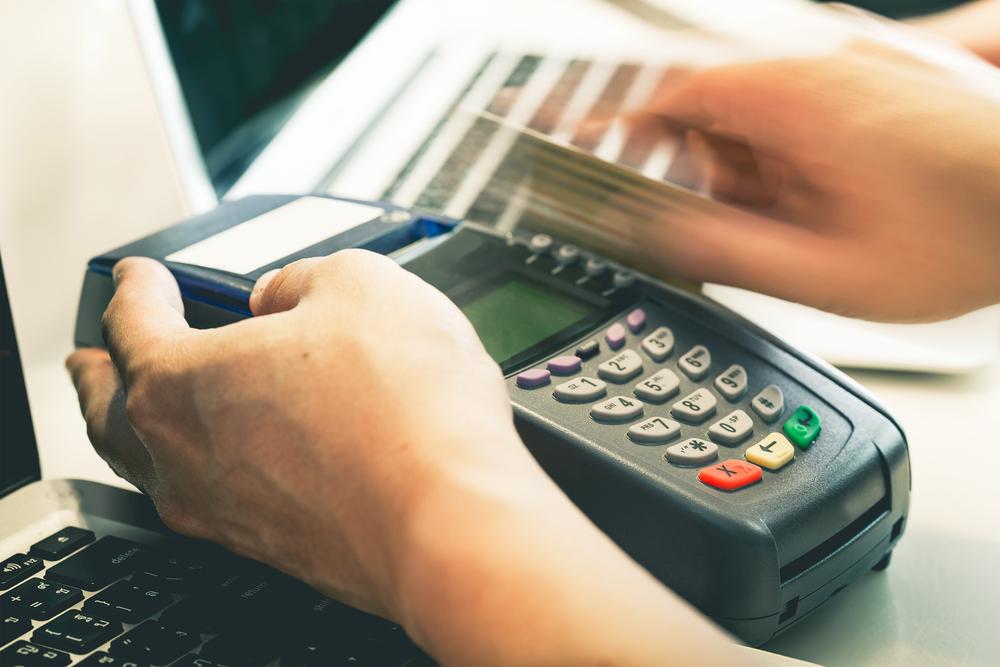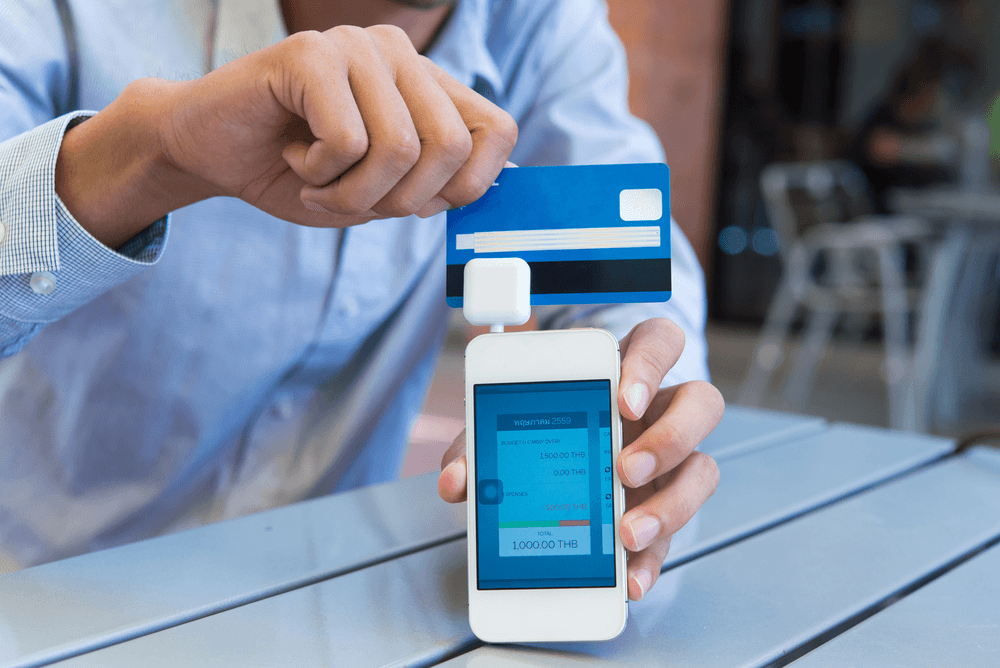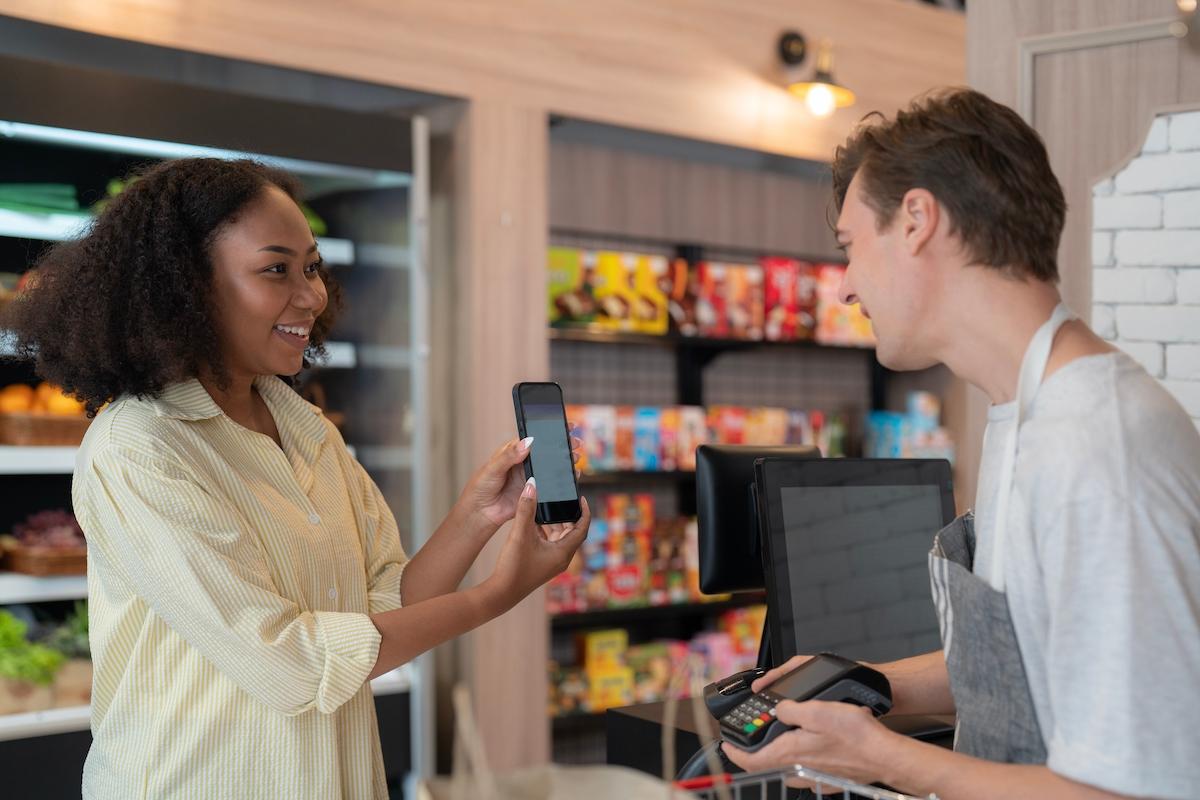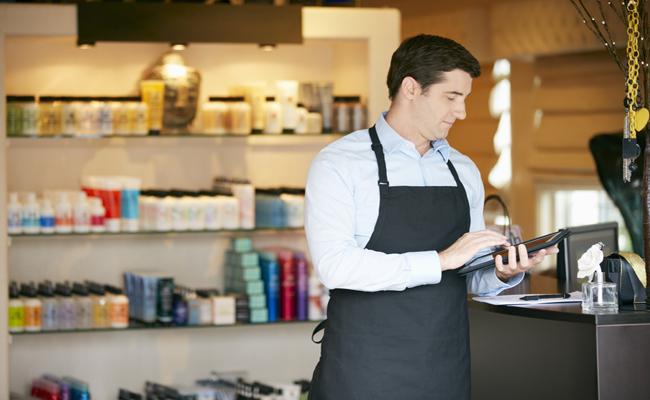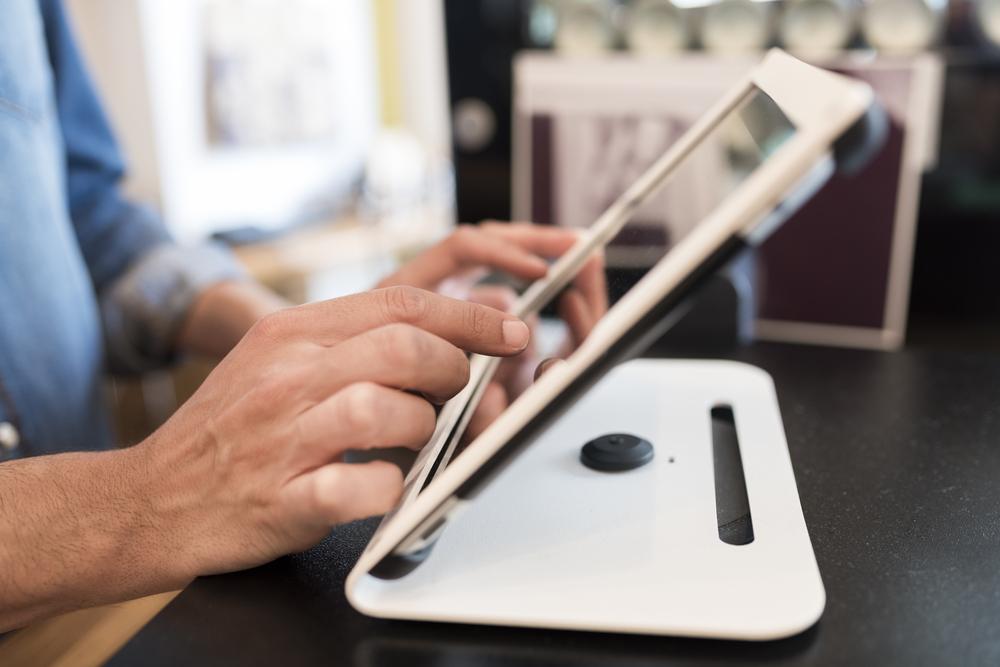MENU
Start
- Best Small Business Loans for 2024
- Businessloans.com Review
- Biz2Credit Review
- SBG Funding Review
- Rapid Finance Review
Our Recommendations
- 26 Great Business Ideas for Entrepreneurs
- Startup Costs: How Much Cash Will You Need?
- How to Get a Bank Loan for Your Small Business
- Articles of Incorporation: What New Business Owners Should Know
- How to Choose the Best Legal Structure for Your Business
Our Guides
- Business Ideas
- Business Plans
- Startup Basics
- Startup Funding
- Franchising
- Success Stories
- Entrepreneurs
Small Business Resources
Grow
- The Best Credit Card Processors of 2024
- Clover Credit Card Processing Review
- Merchant One Review
- Stax Review
Our Recommendations
- How to Conduct a Market Analysis for Your Business
- Local Marketing Strategies for Success
- Tips for Hiring a Marketing Company
- Benefits of CRM Systems
- 10 Employee Recruitment Strategies for Success
Our Guides
- Sales & Marketing
- Finances
- Your Team
- Technology
- Social Media
- Security
Small Business Resources
Lead
- Best Business Phone Systems of 2024
- The Best PEOs of 2024
- RingCentral Review
- Nextiva Review
- Ooma Review
Our Recommendations
- Guide to Developing a Training Program for New Employees
- How Does 401(k) Matching Work for Employers?
- Why You Need to Create a Fantastic Workplace Culture
- 16 Cool Job Perks That Keep Employees Happy
- 7 Project Management Styles
Our Guides
- Leadership
- Women in Business
- Managing
- Strategy
- Personal Growth
Small Business Resources
Find
- Best Accounting Software and Invoice Generators of 2024
- Best Payroll Services for 2024
- Best POS Systems for 2024
- Best CRM Software of 2024
- Best Call Centers and Answering Services for Busineses for 2024
Our Recommendations

Online only. Expires 4/27/2024
Small Business Guide to POS: Point-of-Sale Systems and Software

Table of Contents
Thanks to many technological advancements, point-of-sale (POS) systems have changed, expanding beyond cash boxes and registers to embrace iPads and other mobile devices. POS system benefits also include features designed to boost sales, improve staff performance, manage inventors and make business owners’ lives easier.
To better understand POS systems, use this guide on what to look for and how to find the best option for your business.
Editor’s note: Looking for the right POS system for your business? Fill out the below questionnaire to have our vendor partners contact you about your needs.
Parts of a POS system
In addition to accepting credit cards and cash payments, POS systems offer all-in-one solutions that allow businesses to become more efficient and even run their entire operations from their POS software.
Advanced features include customer relationship management (CRM) software, budgeting, analytics and reporting, inventory management, and marketing tools. The systems can also connect to third-party apps and solutions businesses already use, saving time and preventing headaches by automatically syncing data in real time as sales occur.
A POS system has two main parts: hardware and software.
The best inventory management software has POS integration, allowing you to easily track inventory and costs.
General POS hardware
A simple hardware setup often comprises just two POS components: an internet-connected device and a card reader.
- Internet-connected device: This is often a tablet (typically an iPad), though it can also be a smartphone. Some POS vendors may require you to use their own POS credit card terminals in place of a tablet or smartphone.
- Card reader: This device connects via Bluetooth or plugs into your tablet or smartphone and reads credit and debit cards. Free magnetic stripe card readers are often available, but in most cases, plan on upgrading to a model that has EMV technology so you can accept chip cards. Your card reader should also have NFC technology to accept contactless credit cards as well as mobile payments like Apple Pay and other mobile wallets. You may also want a mobile credit card reader to accept mobile credit card payments more efficiently. For example, you can hand these readers directly to customers in sit-down service establishments.
Advanced POS hardware
More complex setups may include the following POS equipment.
- Monitor or display screen: Here, you’ll see all the sales details you’re processing and can view the steps needed to complete the transaction.
- Keyboard: Some POS systems include keyboards to manually enter transaction amounts or type in customer phone numbers or email addresses. Many of these keyboards have functions specific to certain industries, so make sure any keyboards you purchase meet all your daily needs.
- Cash drawers: These drawers store cash along with receipts and other paperwork. Cash drawers should receive open and close signals from your digital POS interface.
- Barcode scanners: These devices read the barcodes on the items you sell and convert this information to product names and prices that appear on your POS monitor. This function facilitates sales and allows you to automate your inventory tracking.
- Signature-capture device: Although the card networks no longer require signature verification in most instances, your business may still find them necessary. These devices capture customer signatures digitally.
- Receipt printer: To finalize the transaction, this device prints a summary of the buyer’s purchases. You should always ask the customer if they want the receipt, and it never hurts to keep a copy for yourself if your POS system allows this.
- User-facing kiosk: Those touchscreen self-service kiosks through which you place orders at fast-food chains count as POS hardware. If your business prepares items on demand for customers in a storefront, these kiosks can minimize order miscommunications and streamline order retrieval.
- Digital scales: When charging for items by weight, a digital scale can be a helpful addition to your POS system. A digital scale quickly computes the price you’ll charge for weight-based sales. The software connecting your scale to your POS system should also make corresponding changes to your inventory.
- Routers: Though not exactly POS hardware, you can’t run a POS system without an internet connection. That’s why some POS companies sell internet routers. Buying a router from a POS company is a one-time cost that’s likely less expensive over time than obtaining one from your internet service provider. An ISP router is usually a rental for which you pay monthly.
- Digital menu boards and kitchen display systems: Some restaurants might benefit from these additional two types of POS hardware. Like user-facing kiosks, they help customers see what they can order from you and may assist in actually placing the order. Many restaurant-focused POS providers sell these items, which may be more affordable through a bundle or package deal.
Restaurant POS systems
For restaurants, hardware packages typically include a touchscreen monitor, terminal, receipt printer, cash drawer and card reader. Like retailers, restaurants also have a mobile POS option – typical setups consist of an iPad, cash drawers and a kitchen printer.
While these are standard packages, most providers give business owners the flexibility of picking and choosing the hardware they need, which helps keep costs down.
Mobile POS system benefits for restaurants include mobility, fast checkouts for customers, and advanced inventory management and reporting.
POS software
The software is what runs the system. POS software usually includes the following features and abilities.
- Simple mobile app or cloud- or web-based programs: This option is best if you will operate your POS from a mobile device. This software allows you to make transactions from anywhere as long as you have your mobile device and card reader.
- On-premises terminal programs: Alternatively, you can opt for programs only accessible on your business grounds at your cashier or another POS terminal.
- Accounting software compatibility: A key part of a trustworthy POS software program is the ability to integrate with your accounting software so you can thoughtfully plan your business budget.
- Inventory tracking: When you scan product barcodes upon purchase, your inventory-tracking POS software automatically updates your stock counts to reflect recent transactions.
- Gift card processing: Not all POS systems fully integrate with gift card programs. However, without this function, gift card processing can be needlessly complicated.
- Purchase-order creation: Think of this function as an extension of inventory-tracking capabilities. Some systems can be set to reorder products automatically when your inventory is low and reaches a certain threshold. This feature saves time reordering products and can ensure you have plenty of your most popular items available at all times.
- Vendor and customer management: Alongside purchase-order creation for your vendors, you can also use some POS systems to manage your customer information. This way, you can capture customer contact information when you’re ringing up a sale. Some systems also allow you to use your digital receipts to request customer feedback in the form of reviews or business surveys.
- Employee performance tracking: You can use some POS systems to track employee metrics such as sales volume, hours worked, and (if applicable) tips earned.
Cloud-based, mobile-enabled restaurant POS platforms provide restaurants with benefits such as faster innovation, lower IT complexity and costs, exceptional guest experiences, and increased security.
In addition, each specialty package, such as the one for restaurants and bars, offers its own unique features. Examples for a bar may include the ability to track bar tabs, split checks, and manage special pricing for certain events, like happy hour.
Typically, the POS hardware and software you need costs several hundred dollars. More advanced bundles can run into the low thousands. To save costs, avoid bundles and instead add individual key components to your cart.
POS systems are composed of both hardware and software. You can choose a simple system with minimal features or an advanced system that can help you manage multiple parts of your business.
What to look for in a POS system
You’ll need to make a series of choices when selecting a POS system. The following aspects are some of the most important to consider during this process.
- Terminal and peripherals: What type of hardware do you want? The best POS systems offer mobile and touchscreen systems, barcode printers, customer displays and PIN pads.
- POS software: Each POS system is only as good as its software, so be sure to choose a system that offers software with the features your business requires. This depends on your industry and unique needs, and whether you get a traditional or mobile POS system.
- Mobile and wireless technology: At the very least, you should consider a POS system that offers wireless tableside or inventory tools. The best providers offer software compatible with most Apple and Android mobile devices.
- After-purchase care: Good customer support is a must. A POS system becomes the brains of a business, so when the system has a problem, it can bring the whole operation to a standstill. Business owners should prioritize finding a POS system provider that offers after-hours telephone support, installation assistance, training and remote support.
Popular POS systems
Here are some popular POS systems that include all of the above features.
- Clover: Clover may well be the most popular and best choice overall. Read our Clover review for more information.
- Square: Square is an excellent choice for small businesses. It is actually credit card processing software with all the above POS inclusions. Read our Square review for more information.
- Lightspeed: Lightspeed is a great option for retail businesses. Read our Lightspeed review for more information.
Of course, restaurants are something of a special case when it comes to POS systems. If you’re looking for restaurant POS software and hardware, Toast is a great choice, especially if online orders comprise much of your revenue. Read our review of Toast to learn more.
You might also consider TouchBistro for POS software, though TouchBistro doesn’t sell POS hardware. Either way, TouchBistro will likely be compatible with any POS hardware you buy. Read our TouchBistro review to learn more.
Before choosing a POS system, consider what hardware you need, what software features you want, and whether you want a mobile or stationary system. Make sure the vendor provides good customer support as well.
Matching your POS system to your needs
Every business has unique needs. With so many options for POS systems and features, it can be challenging for business owners to figure out which systems are best for them.
To help you find the right system, Business News Daily has done extensive research and analysis to compile a list of the best POS systems for small businesses. Our list includes the best POS system for retailers, restaurants and small businesses overall.
Chad Brooks, Sara Angeles and Kayla Harrison contributed to the writing and research in this article.


